
In Ha Long, the ships were equipped with weapons, ammunition, food, repaired and then taken to Do Son (Hai Phong City) for assembly. Also from Ha Long, many ships were taken straight to Hainan Island (China) to fly the flags of Western countries to distract the enemy, then turned the waves towards the South. According to Mr. Nguyen Van Cai, Chairman of the Ho Chi Minh Trail Tradition Association on the sea in Quang Ninh, because Hai Phong was blockaded by mines, it was very difficult for ships to approach; meanwhile, Ha Long had many caves that could hide goods, and ships could also approach more easily. During the fierce war days, the operations of the unnumbered ships encountered many difficulties, even causing damage. Many cargo ships going to the South were safely sheltered from bombs right on the rocky islands in the VHL area.
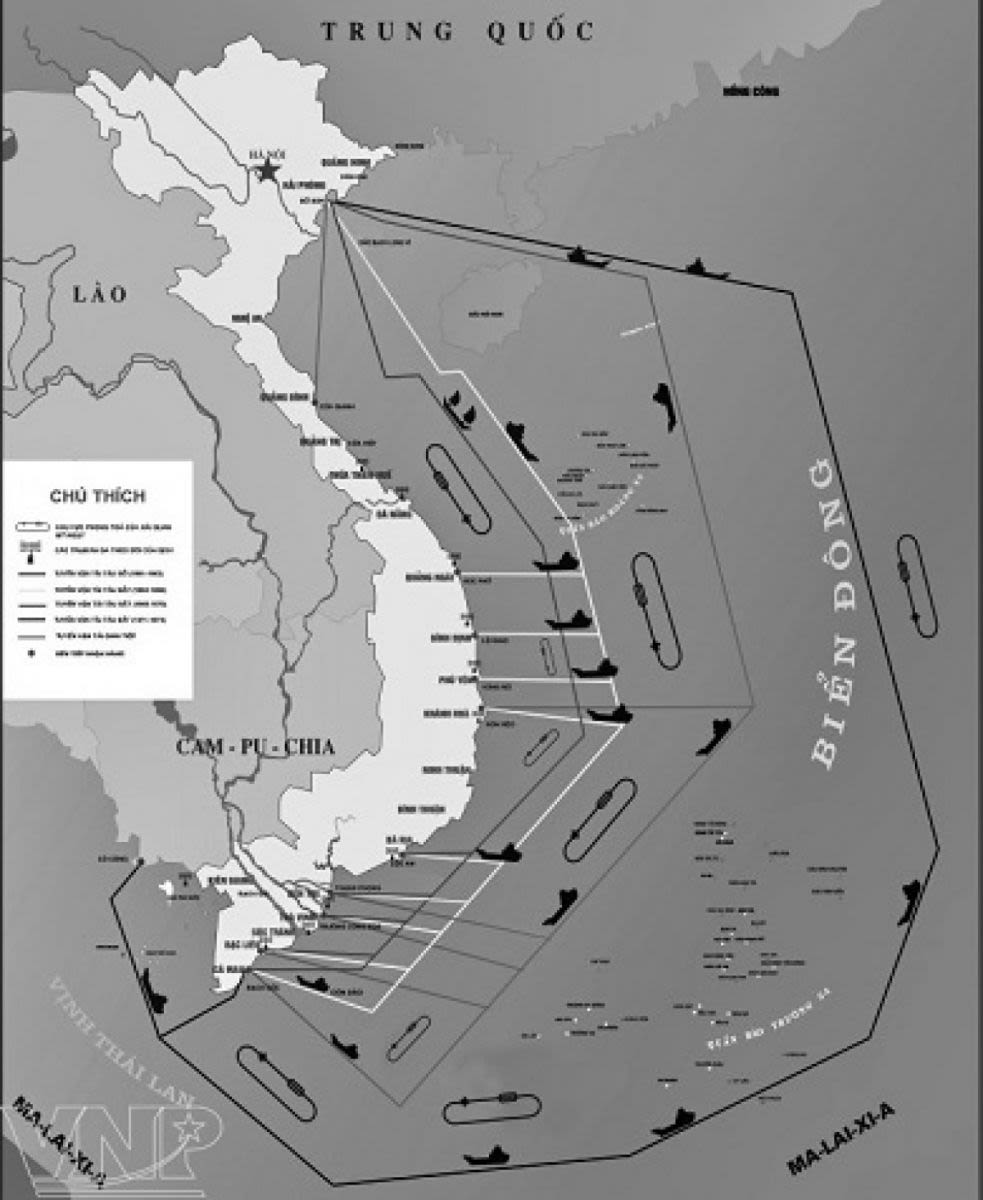
Map of Ho Chi Minh Trail at sea.
The caves on VHL are secret treasure troves of weapons hidden on unnumbered ships, such as: Dau Go Cave, Bo Nau Cave, and Sung Sot Cave. Mr. Vu Dang Khoa (83 years old, Bach Dang Ward, Ha Long City), a former soldier on ship 67, shared: "VHL has a closed terrain, is less prone to storms, and has many caves, so it was chosen as the starting point for ships carrying weapons and food to the South. In October 1964, I was able to follow the ship to the South. Our ship 67 received goods in Tuan Chau, anchored at Trinh Nu Cave, then went to Vung Ech; at midnight, it passed K15 Do Son Wharf (Hai Phong) for maintenance before officially setting off. After the first successful trip, we continued to return to Quang Ninh and participated in many other arduous supply trips."
On VHL, there are still intact traces of the Quan Cave military port, which was built from May 1, 1966, and completed exactly 4 years later, including a shipyard, a repair station, a warehouse for weapons, oil, water, and two piers. In the cave, there is a passage leading from the ceiling to the top of the island, where a radar station and anti-aircraft gun turrets were located. During the fierce war, the port was secretly used as a place to store weapons and train marine commandos. After peace, fishermen learned that there used to be a secret military port here.

Our soldiers next to the wreckage of an A4D jet, piloted by US Navy Lieutenant E. Alvarez, shot down over Ha Long Bay (August 5, 1964).
VHL is also a place that witnessed many heroic periods of history. On VHL, on March 24, 1946, Uncle Ho met with representatives of the French government in Indochina to negotiate the signing of an official peace treaty to replace the Preliminary Agreement of March 6, 1946, demonstrating his talented leadership when the fate of the Fatherland "hung by a thread". On August 5, 1964, VHL continued to witness the first victory of the army and people of the North, shooting down 2 planes and capturing the first American pilot in the fight against the escalating war of destruction of the socialist North of the US imperialists. All have become valuable red addresses, with educational significance, reminding today's and future generations to remember the glorious victories and noble sacrifices of generations of fathers and brothers for the independence and freedom of the Fatherland.
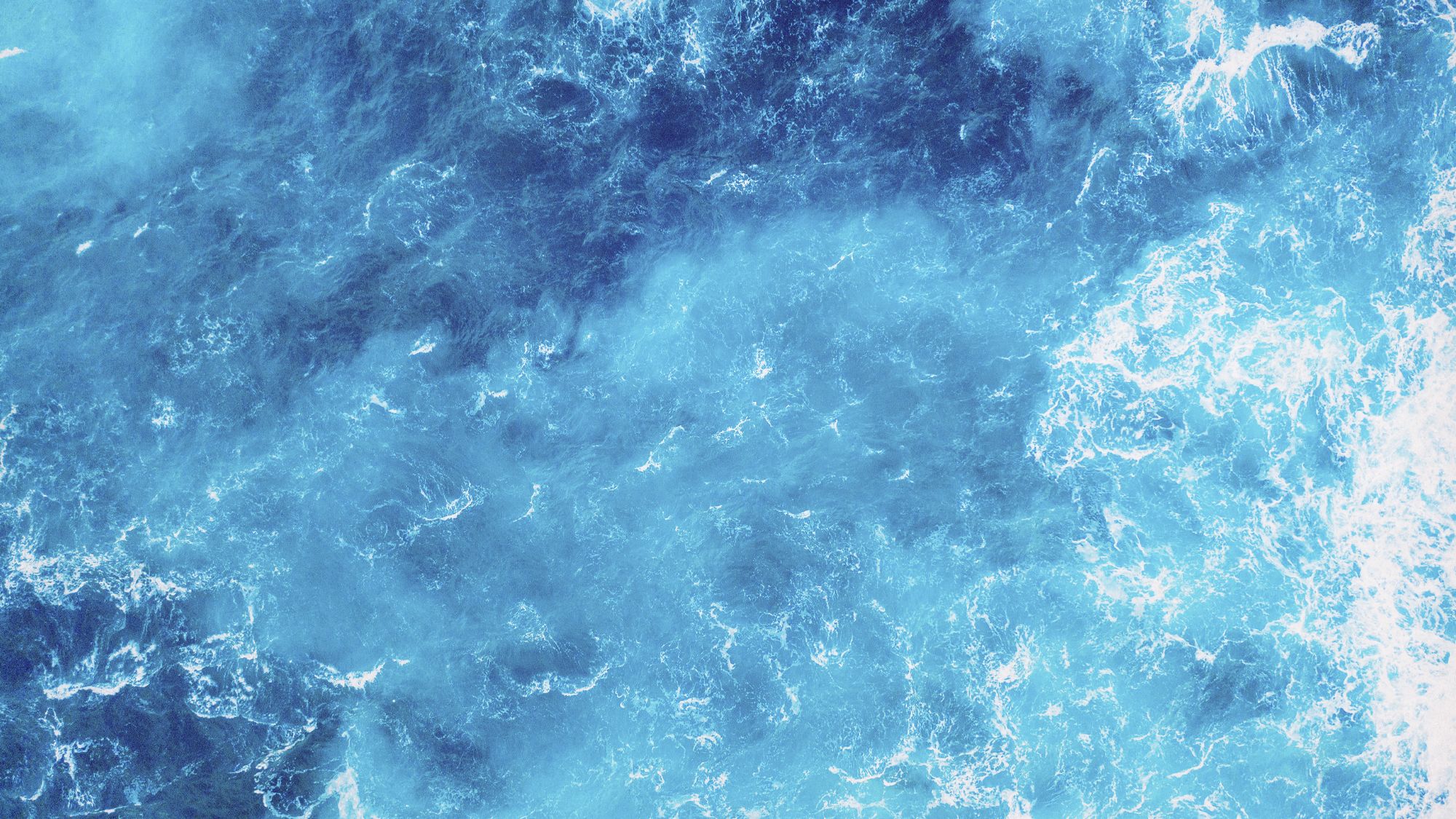

Today, VHL is a highlight on the tourism map, known to many domestic and foreign tourists. VHL is the first World Natural Heritage of Vietnam to be recognized by UNESCO in 1994 for its natural landscape value and expanded the geological and geomorphological criteria in 2000. In 2011, VHL became one of the 7 New Natural Wonders of the World. In 2023, at the 45th annual meeting, the World Heritage Committee issued a decision approving the expansion of the VHL World Heritage boundary to include the Cat Ba archipelago of Hai Phong City. In 2024, the Ha Long Bay - Cat Ba Archipelago Heritage was awarded a Certificate of Recognition of the International Geological Heritage of Ha Long Bay - Cat Ba Archipelago by the International Union of Geological Sciences (IUGS). Possessing outstanding global values and many domestic and international titles, Quang Ninh province always identifies VHL as a treasure bestowed by nature to mankind, an important driving force for the province to develop tourism and transform the growth model in the economic structure from "brown" to "green", promoting the heritage economy.
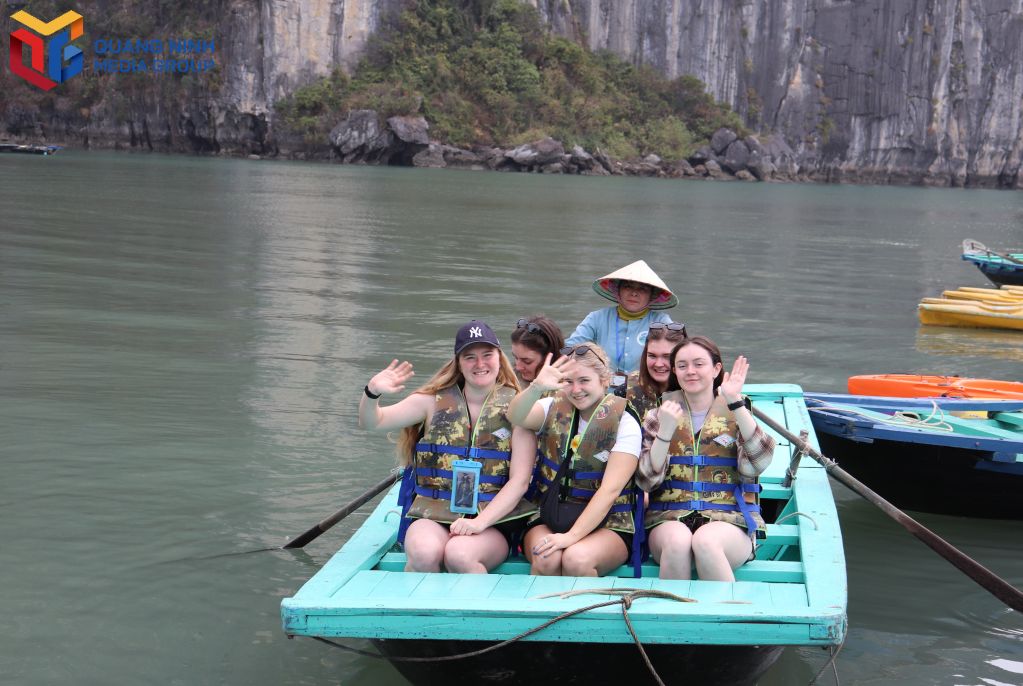
Foreign tourists explore Ha Long Bay.
In recent years, the province has implemented synchronous solutions to strictly manage, preserve and promote the value of VHL heritage according to the World Heritage Convention. At meetings and working sessions with Quang Ninh province, the World Heritage Committee has acknowledged and commended the efforts and responsibilities of Quang Ninh in implementing effective solutions to manage, protect the integrity and sustainability of the VHL heritage site in accordance with the World Heritage Convention. In particular, it highly appreciated a number of typical solutions that Quang Ninh has implemented, such as: Relocating households from fishing villages in the Bay to live on shore since 2014; banning fishing in the absolute protection area of the Heritage site since 2018; developing a Heritage Management Plan; implementing an assessment of the tourism capacity of the heritage site; strengthening environmental protection solutions; developing a strategic outline for sustainable management of VHL tourism; promoting the process of "green" economic transformation, etc.
With efforts in managing, preserving and promoting heritage values, in recent years, VHL has always been present in the rankings and votes of attractive tourist destinations voted by many international organizations, media agencies and prestigious websites in the world, such as: Vietnam's leading tourist area; Vietnam's leading destination; one of the 10 most impressive UNESCO heritages in Asia; one of the 10 most ideal tourist attractions in Southeast Asia; one of the 24 tourist destinations worth visiting in 2024... From 1996 to present, VHL has welcomed nearly 58 million visitors, including over 26 million Vietnamese visitors and 32 million foreign visitors; collecting entrance fees of over 8,823 billion VND.
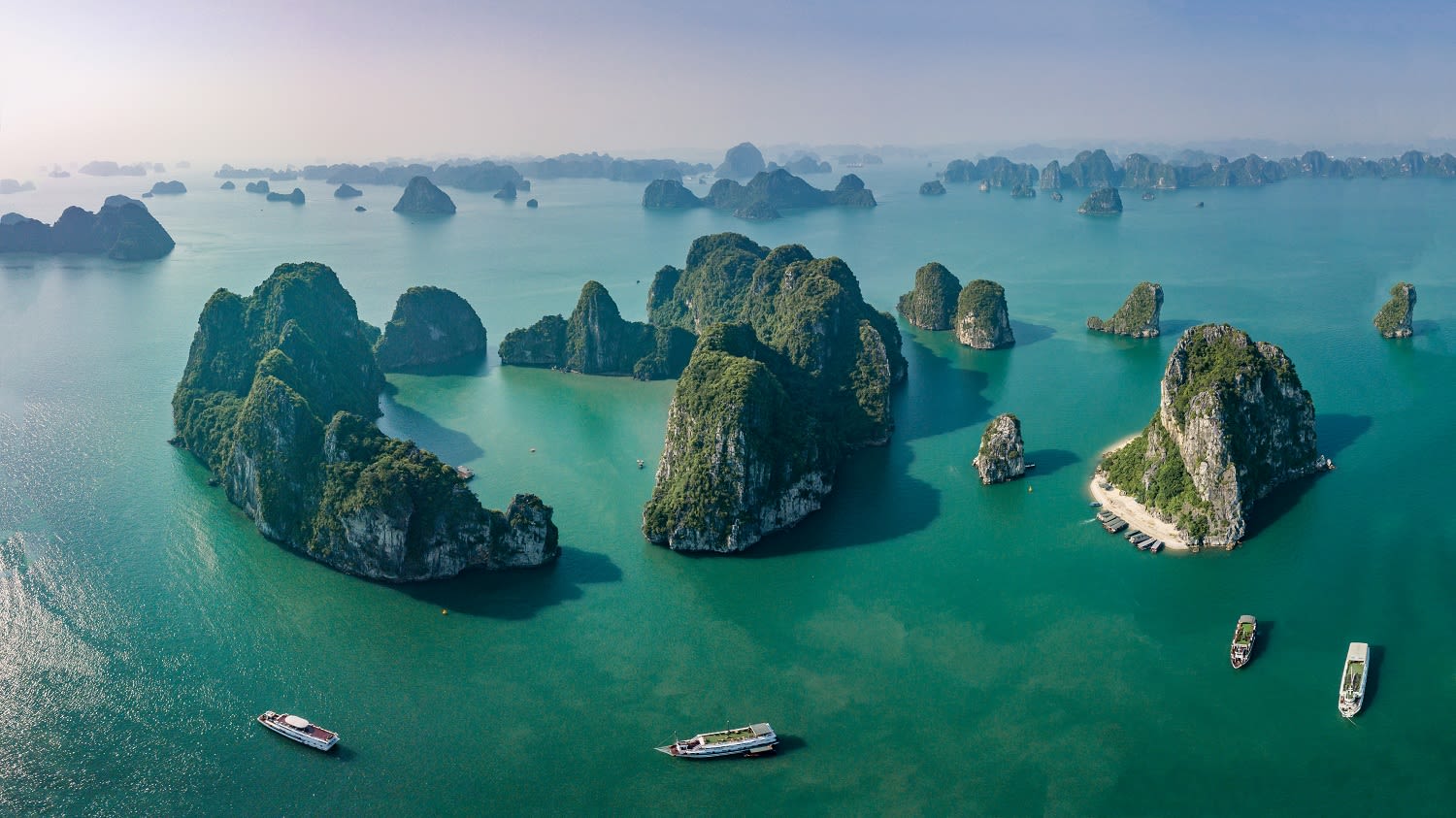
The poetic and eternal beauty of Ha Long Bay.
In the Quang Ninh Provincial Planning for the period 2021-2030, with a vision to 2050; Ha Long City Planning to 2040... all associate the conservation and sustainable development of VHL as the key goal and task in long-term orientations. Mr. Vu Kien Cuong, Head of VHL Management Board, said: To promote the value of heritage, we aim to develop diverse tourism products and services, improve the quality of experience for visitors, to develop sustainable tourism. Specifically, improve the quality of traditional tourism products; develop new routes, destinations and tourism products and services; expand tourism space to increase experiences, prolong visitors' vacation time, and reduce pressure on heritage areas. At the same time, direct the addition of new tourism services to meet the needs of the high-spending tourist market, such as: New beaches, caves, areas with beautiful and safe landscapes; Build unique souvenir products with VHL's own identity...
Source: https://baoquangninh.vn/23-4-diem-dau-cua-con-duong-huyen-thoai-di-san-the-gioi-hom-nay-3353274.html


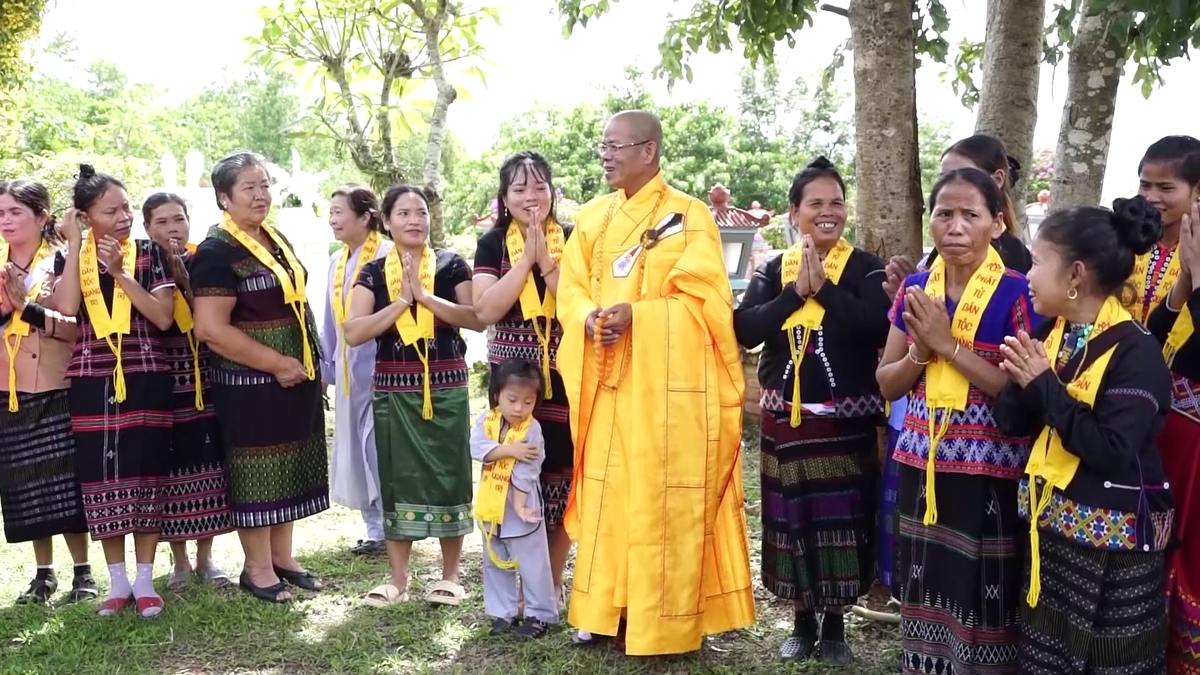
![[Photo] General Secretary To Lam presents the title "Hero of Labor" to the Party Committee, Government and People of Ho Chi Minh City](https://vphoto.vietnam.vn/thumb/1200x675/vietnam/resource/IMAGE/2025/4/30/08a5b9005f644bf993ceafe46583c092)
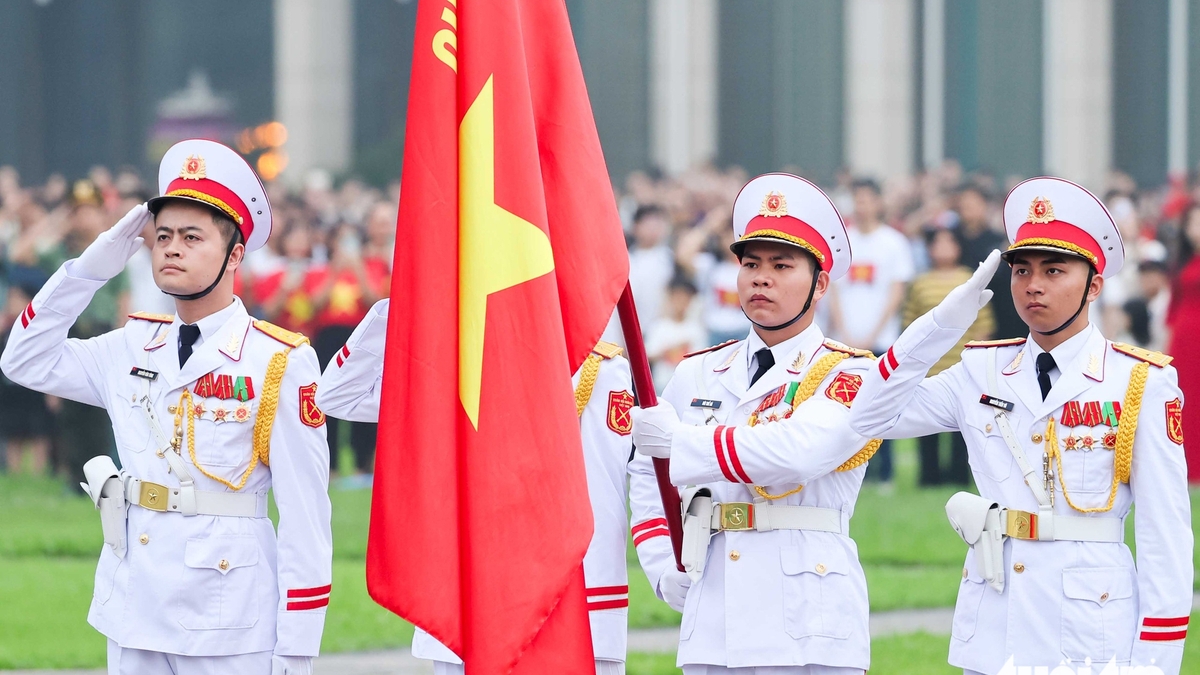

![[Photo] Flag-raising ceremony to celebrate the 50th anniversary of the Liberation of the South and National Reunification Day](https://vphoto.vietnam.vn/thumb/1200x675/vietnam/resource/IMAGE/2025/4/30/175646f225ff40b7ad24aa6c1517e378)
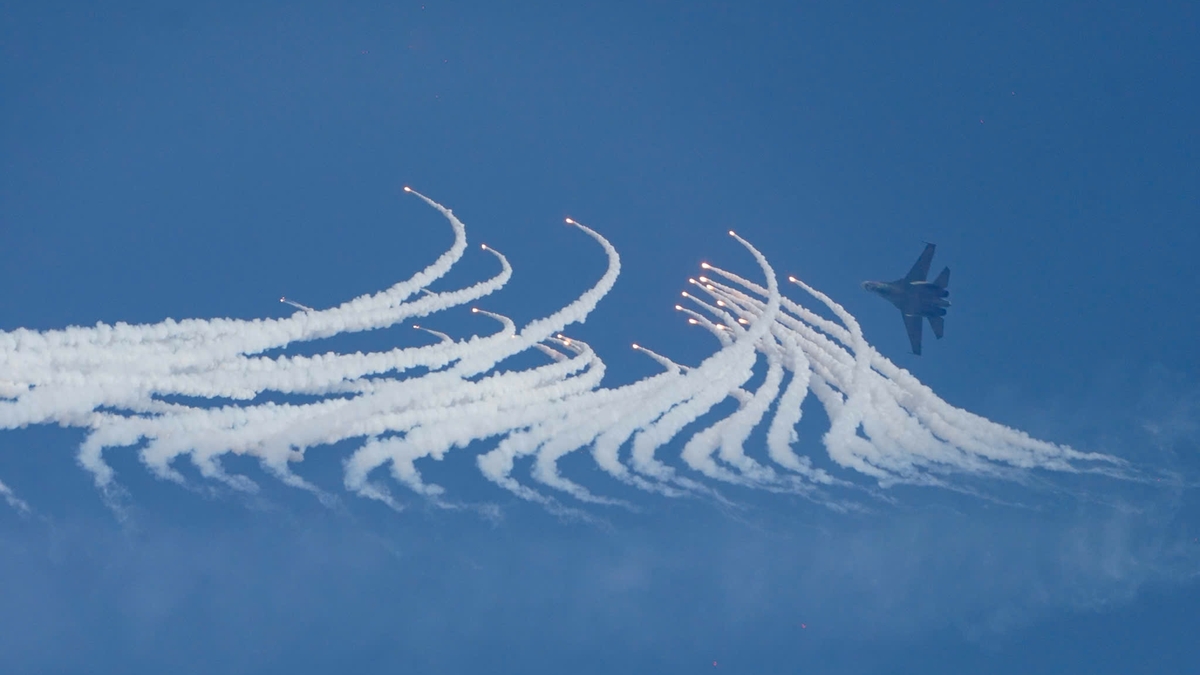
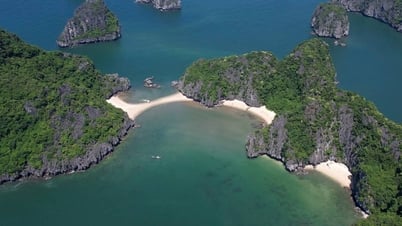

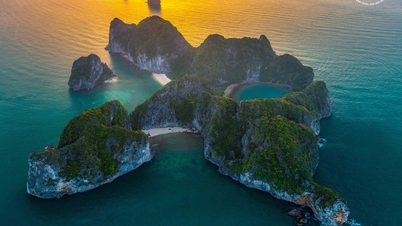

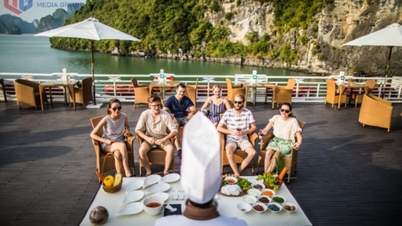

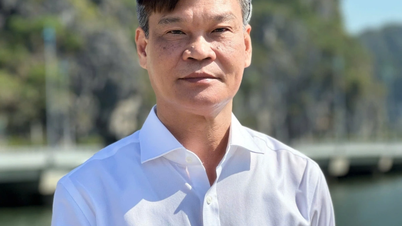

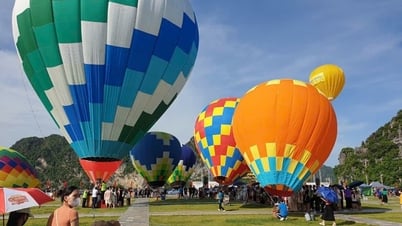














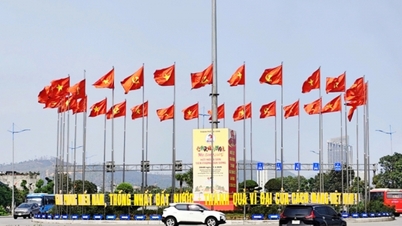

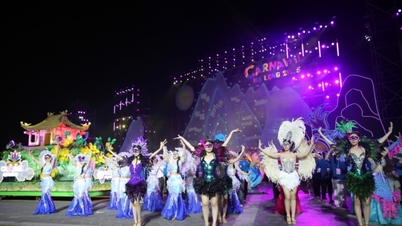

![[Photo] Demonstration aircraft and helicopters flying the Party flag and the national flag took off from Bien Hoa airport](https://vphoto.vietnam.vn/thumb/1200x675/vietnam/resource/IMAGE/2025/4/30/b3b28c18f9a7424f9e2b87b0ad581d05)






































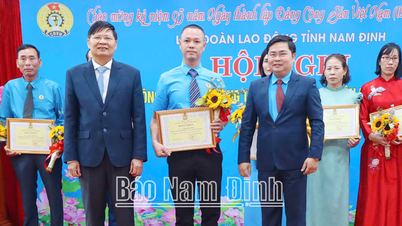

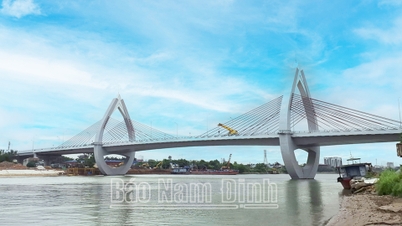




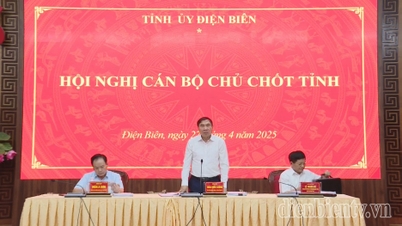














Comment (0)